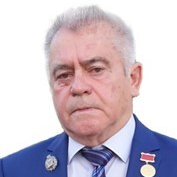Utilization of Mineral Materials and Metal Leaching/Extraction
A special issue of Materials (ISSN 1996-1944). This special issue belongs to the section "Metals and Alloys".
Deadline for manuscript submissions: closed (20 December 2023) | Viewed by 4082
Special Issue Editors
2. Moscow Polytechnic University, 38b Semenovskaya St., Moscow 107023, Russia
Interests: mineral materials; metals extraction; leaching; metallurgy
Interests: metals extraction; renewable energy; quality of electrical energy; reliability of power supply; relay protection
Special Issues, Collections and Topics in MDPI journals
Interests: mathematical modeling; solving applied problems by mathematical methods; differential calculus; energy conversion; electric vehicles
Special Issues, Collections and Topics in MDPI journals
Special Issue Information
Dear Colleagues,
This Special Issue is devoted to the methods and technologies of mining by leaching.
In the context of reducing the cost of exploration of new deposits within the global crisis, increasing the efficiency of mining at already-discovered deposits becomes extremely urgent. Mining efficiency can be improved by involving substandard ores in the production as part of a combination of traditional technology and leaching technology. The advantage of the combined technology is that, at equal costs, more metal is extracted from the subsoil due to the development of off-balance reserves, low-grade ores, and processing tailings.
The development of physical and chemical technologies makes it possible to bring into operation deposits that are not suitable for traditional methods, increase operating reserves at newly designed facilities, reduce the time for their development, reduce the amount of capital investment, and reduce the cost of production and the share of labor-intensive and expensive technologies.
In this Special Issue, we aim to highlight the most pressing technical and technological challenges in using leaching technologies. Significant attention will be paid to the creation of new, combined, environmentally friendly and efficient technologies and their combinations with traditional mining methods. We will try to pay considerable attention to new methods that will ensure an increase in the extraction rate of minerals, provide significant savings in material resources, and reduce the environmental impact on the environment.
This issue will also present a comparative analysis of existing technologies for leaching mining and present new developments in this area.
Topics of interest for publication in this Special Issue include, but are not limited to:
- underground leaching;
- heap leaching;
- leaching with disintegrators;
- combined mining technologies;
- methods of development of off-balance ore reserves;
- physico-chemical technologies for the study of ore deposits;
- environmentally friendly ore-mining technologies;
- methods to ensure an increase in the recovery factor of minerals.
Prof. Dr. Vladimir Ivanovich Golik
Dr. Roman V. Klyuev
Dr. Nikita Martyushev
Guest Editors
Manuscript Submission Information
Manuscripts should be submitted online at www.mdpi.com by registering and logging in to this website. Once you are registered, click here to go to the submission form. Manuscripts can be submitted until the deadline. All submissions that pass pre-check are peer-reviewed. Accepted papers will be published continuously in the journal (as soon as accepted) and will be listed together on the special issue website. Research articles, review articles as well as short communications are invited. For planned papers, a title and short abstract (about 100 words) can be sent to the Editorial Office for announcement on this website.
Submitted manuscripts should not have been published previously, nor be under consideration for publication elsewhere (except conference proceedings papers). All manuscripts are thoroughly refereed through a single-blind peer-review process. A guide for authors and other relevant information for submission of manuscripts is available on the Instructions for Authors page. Materials is an international peer-reviewed open access semimonthly journal published by MDPI.
Please visit the Instructions for Authors page before submitting a manuscript. The Article Processing Charge (APC) for publication in this open access journal is 2600 CHF (Swiss Francs). Submitted papers should be well formatted and use good English. Authors may use MDPI's English editing service prior to publication or during author revisions.
Keywords
- underground and heap leaching
- minerals
- place of birth
- mining of ores
- off-balance sheet reserves
- environmentally friendly technologies
- combined technologies leaching with disintegrators








